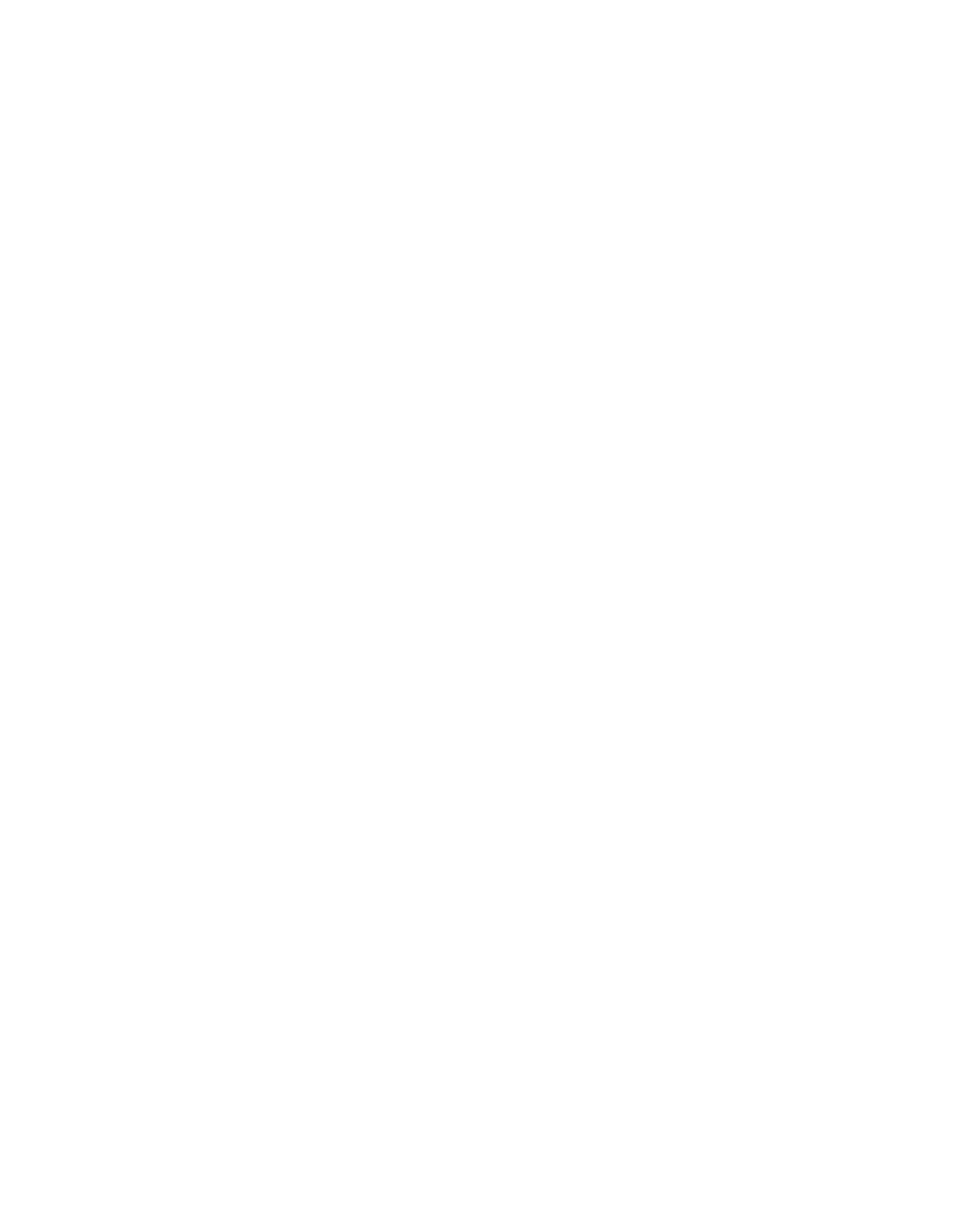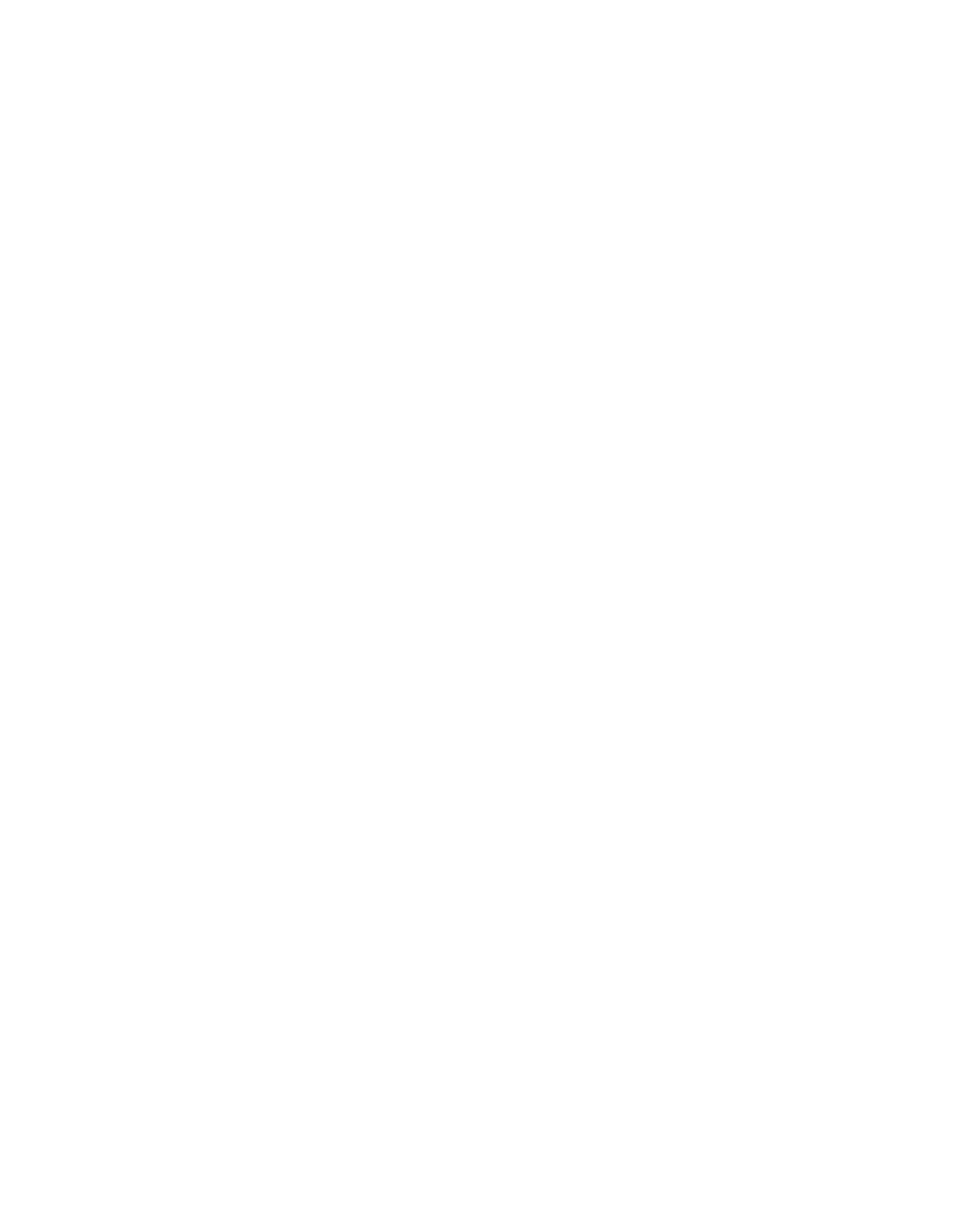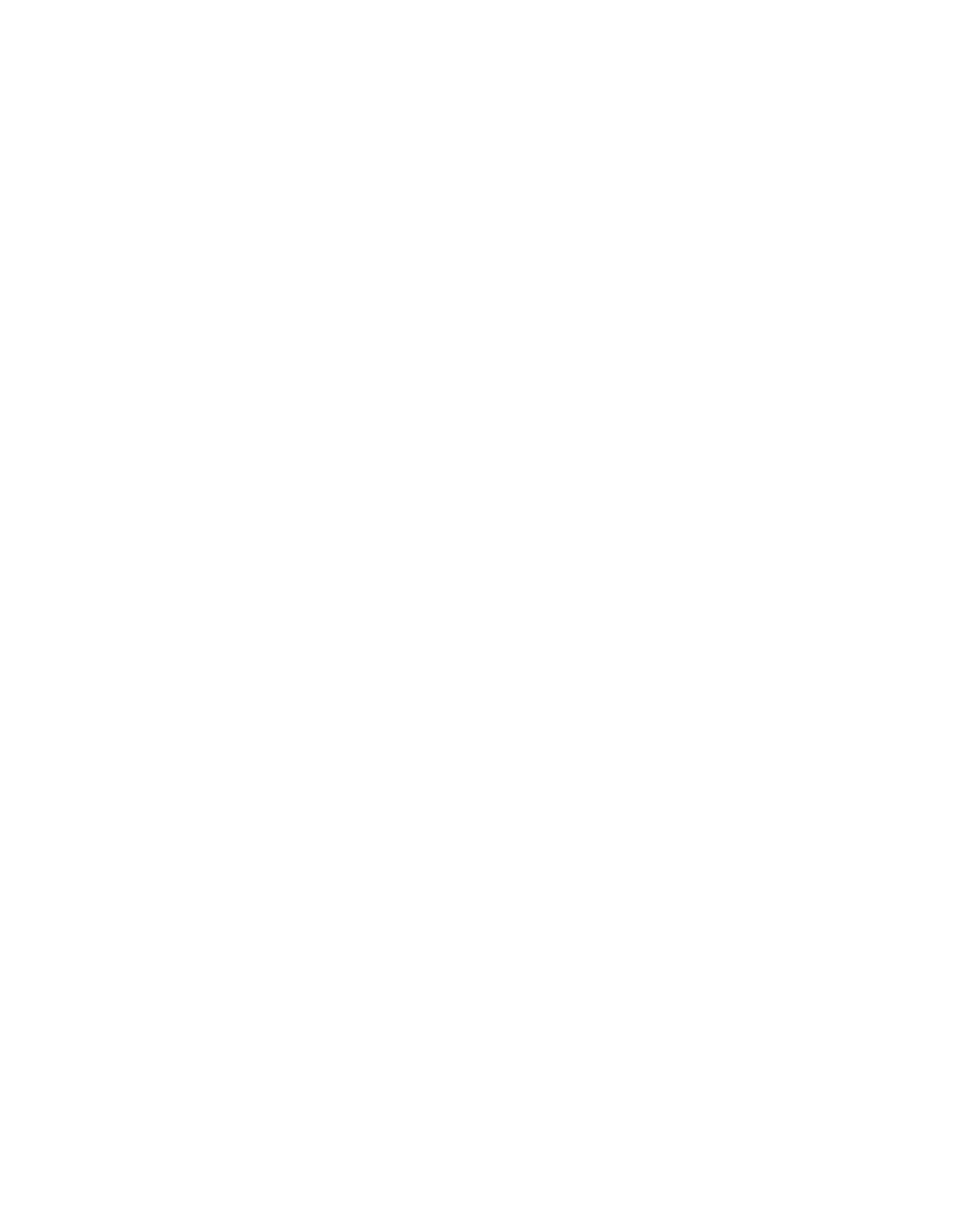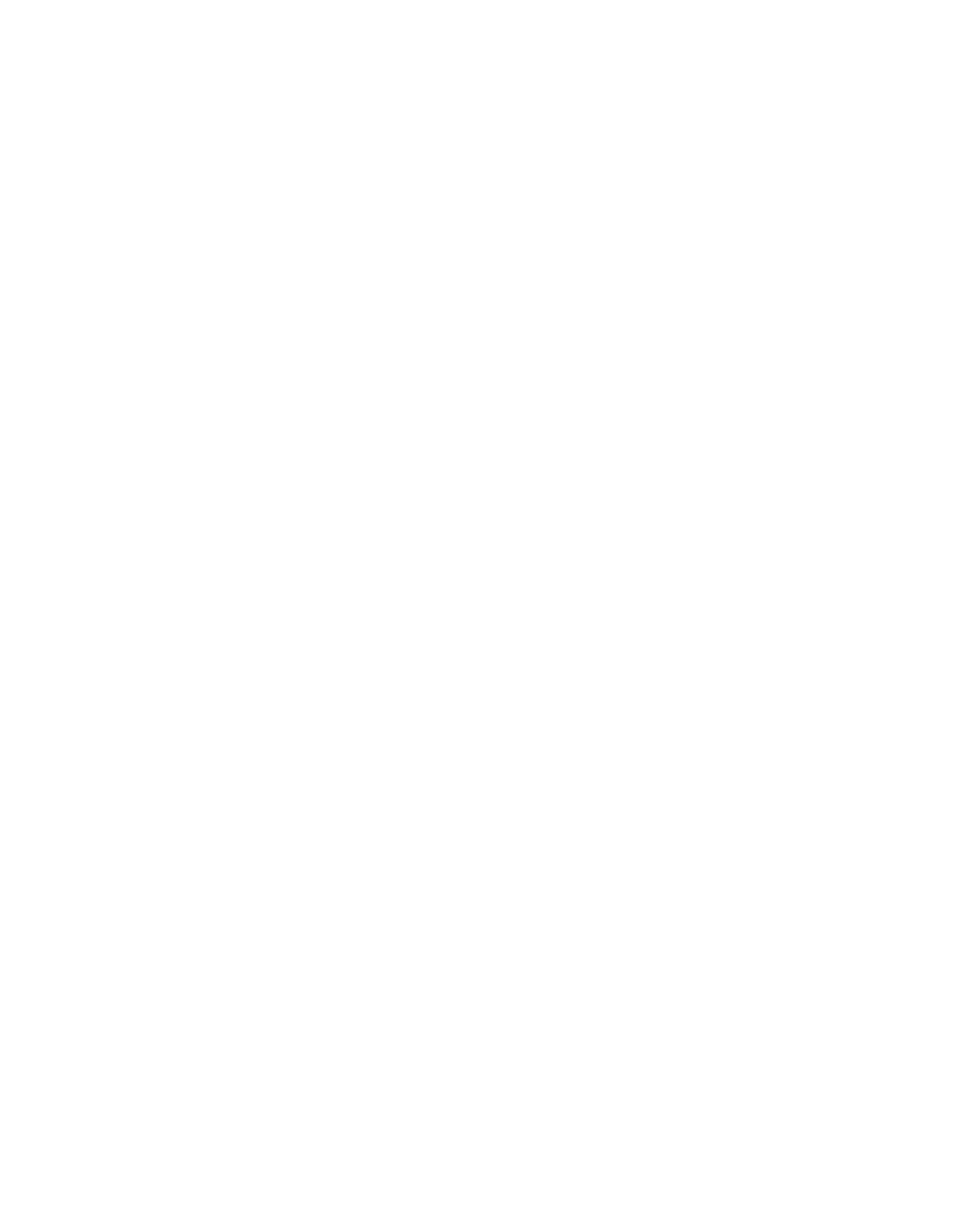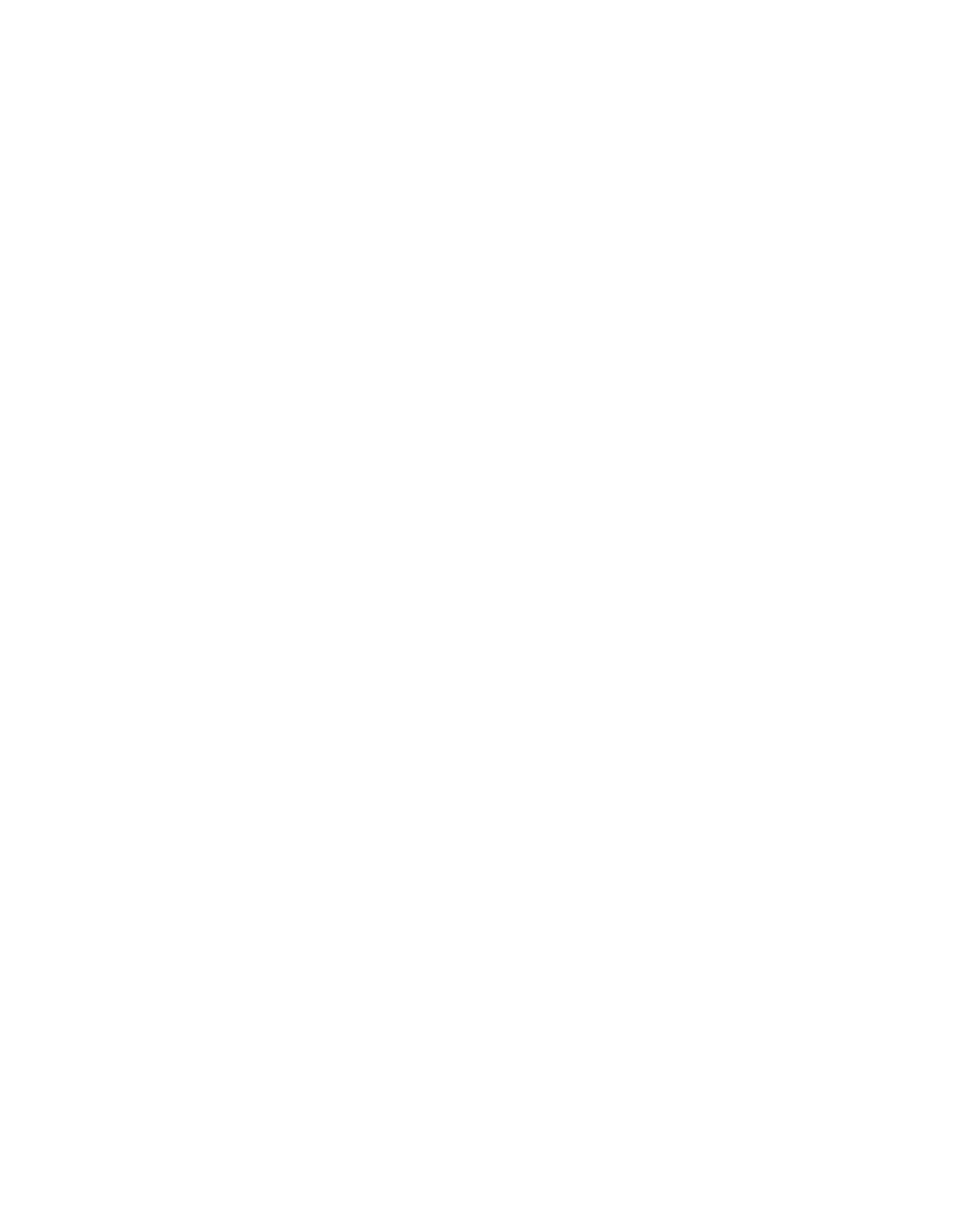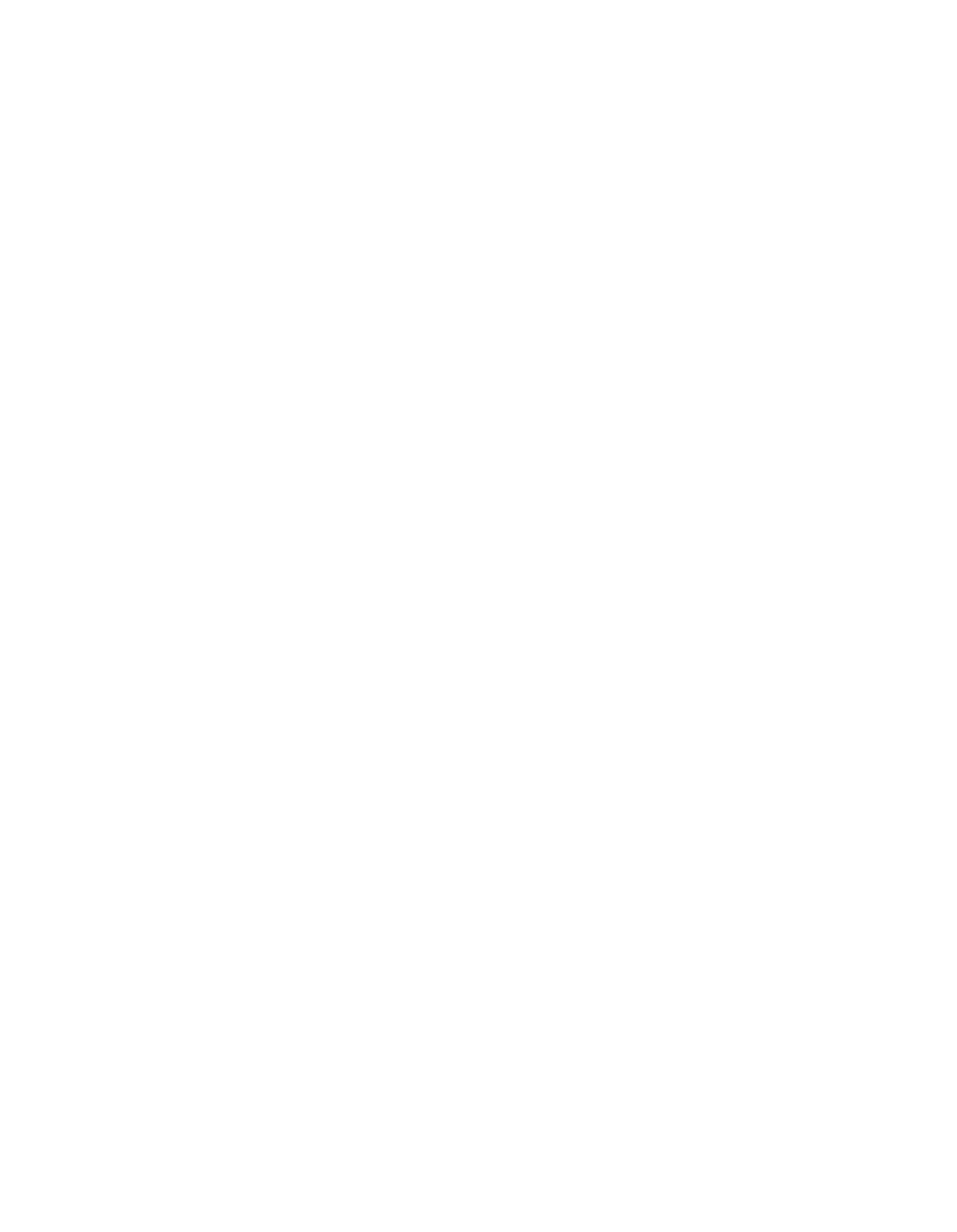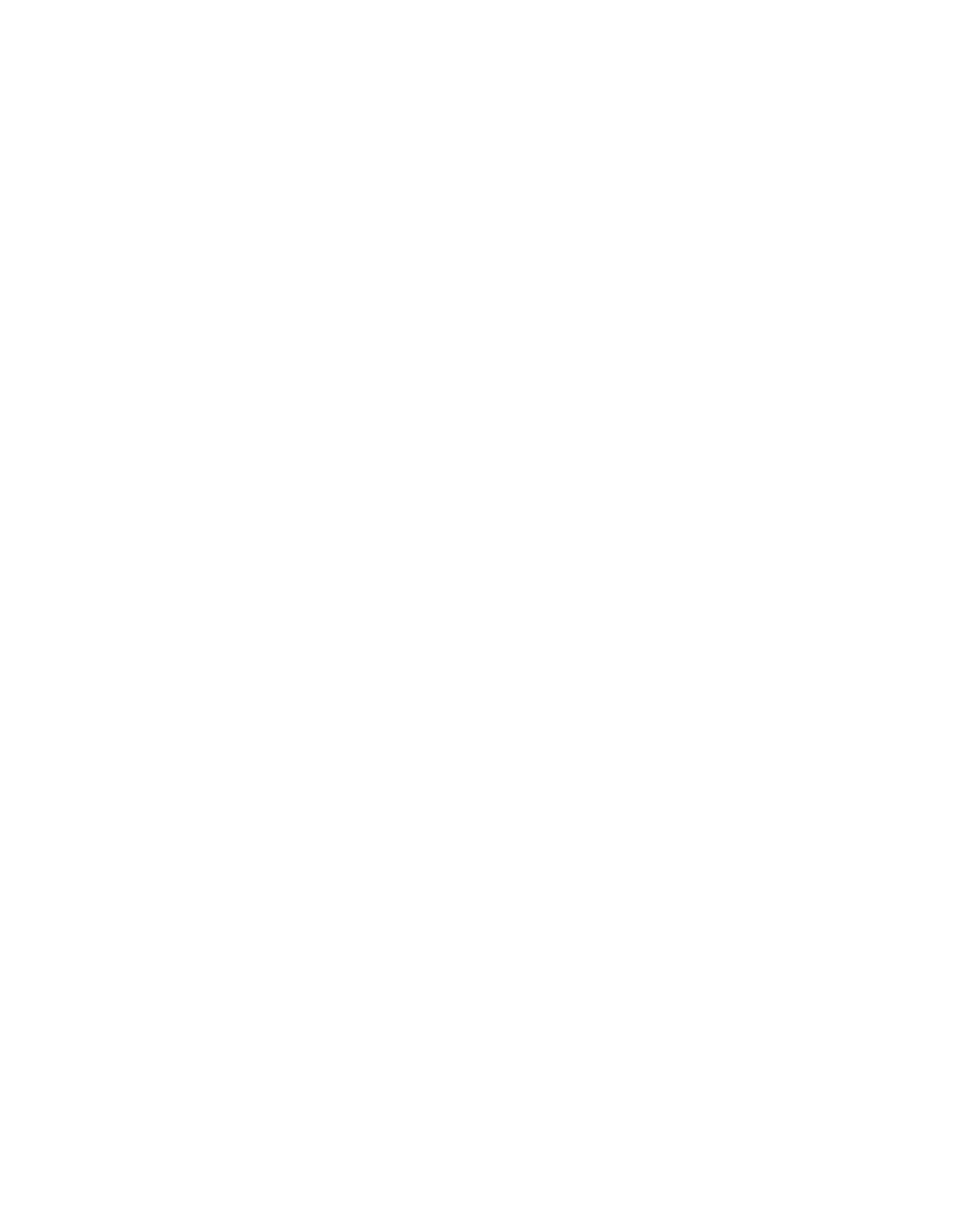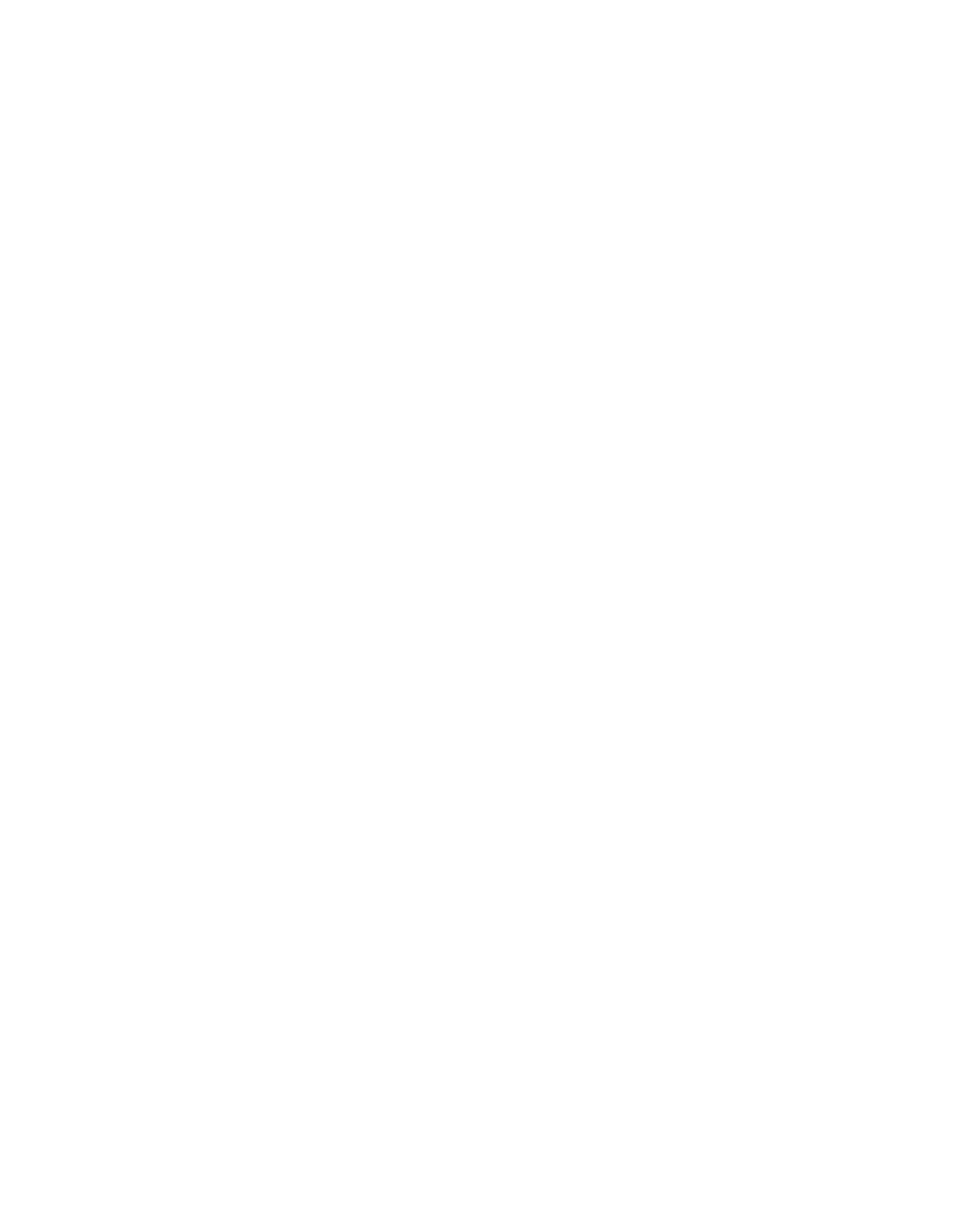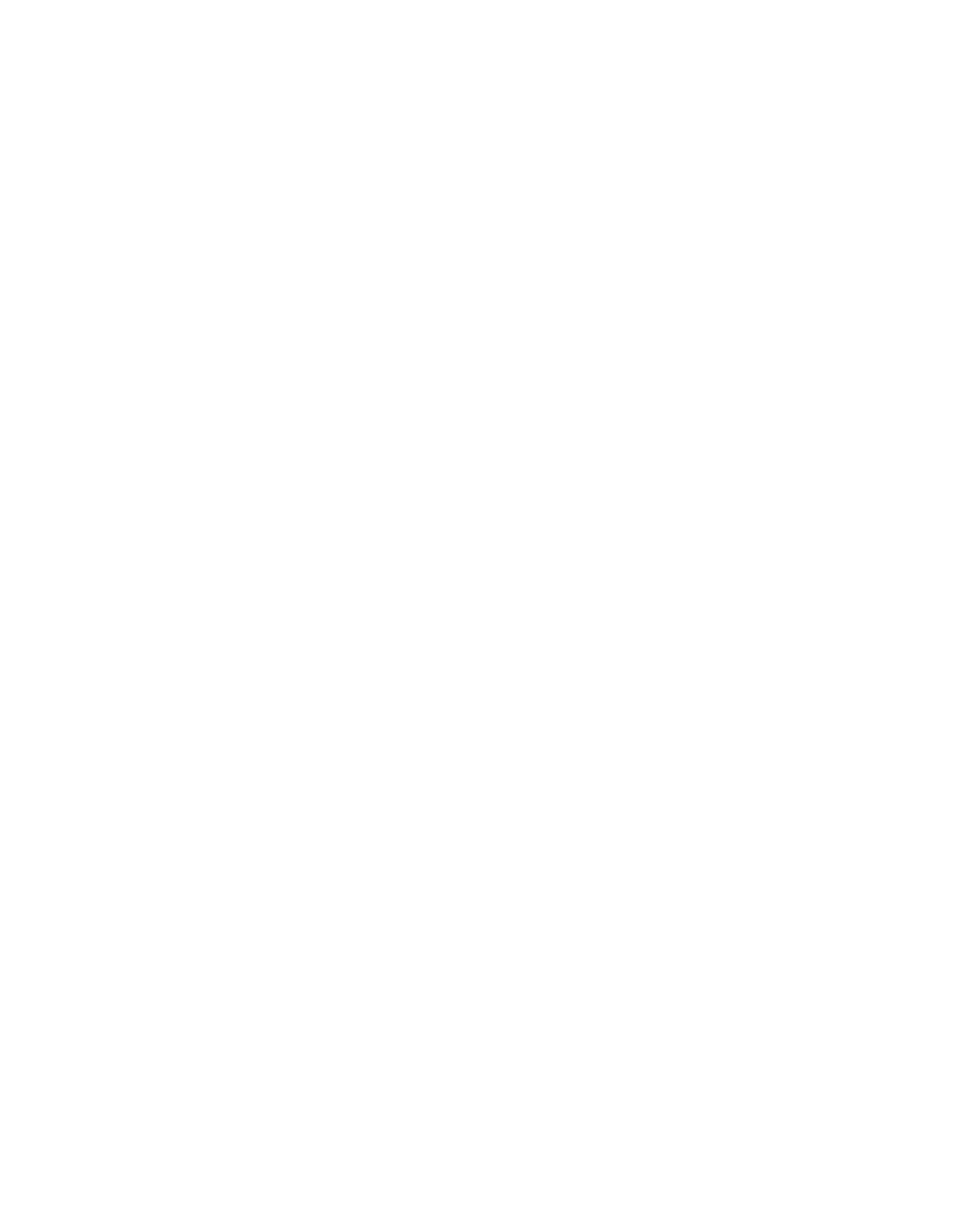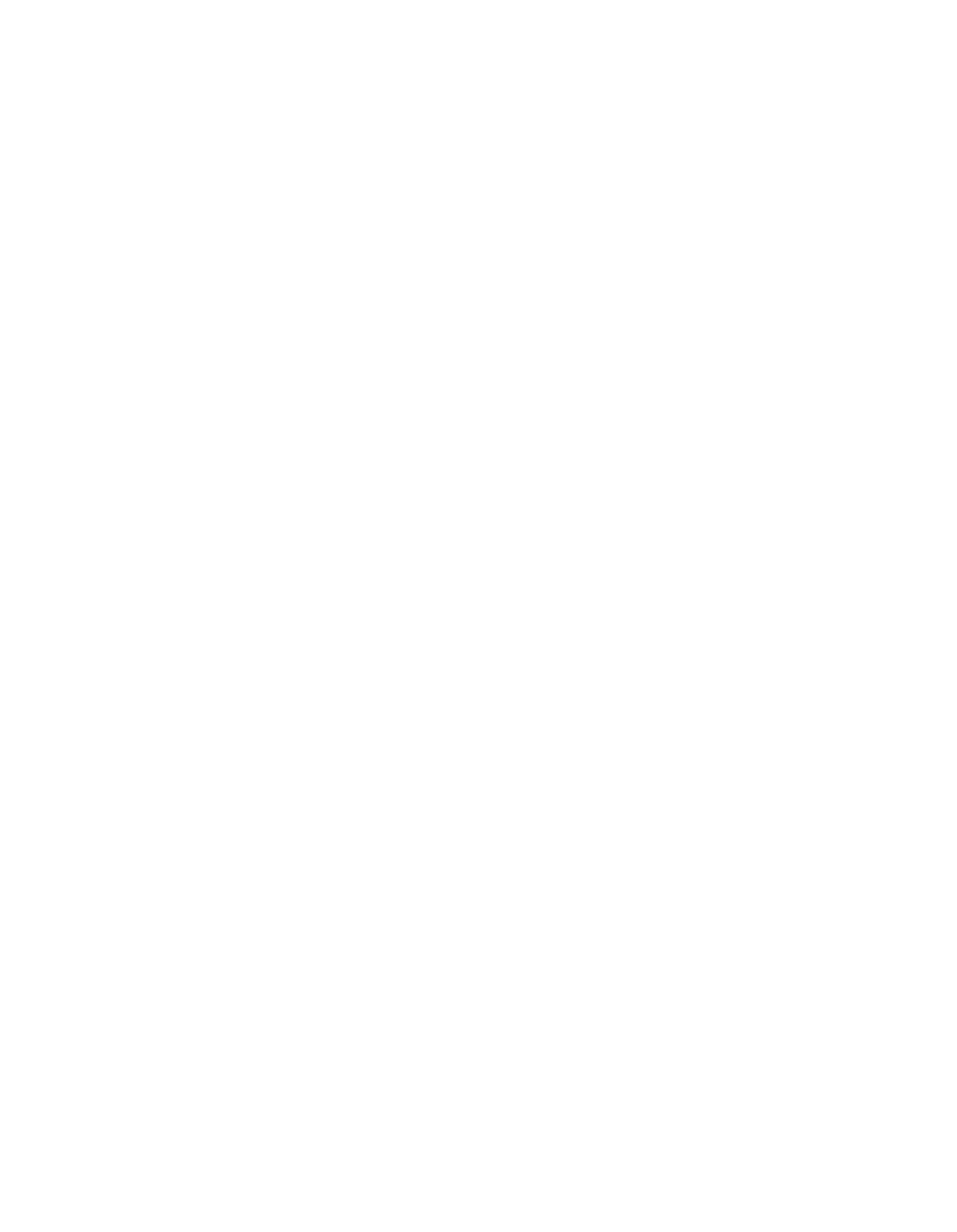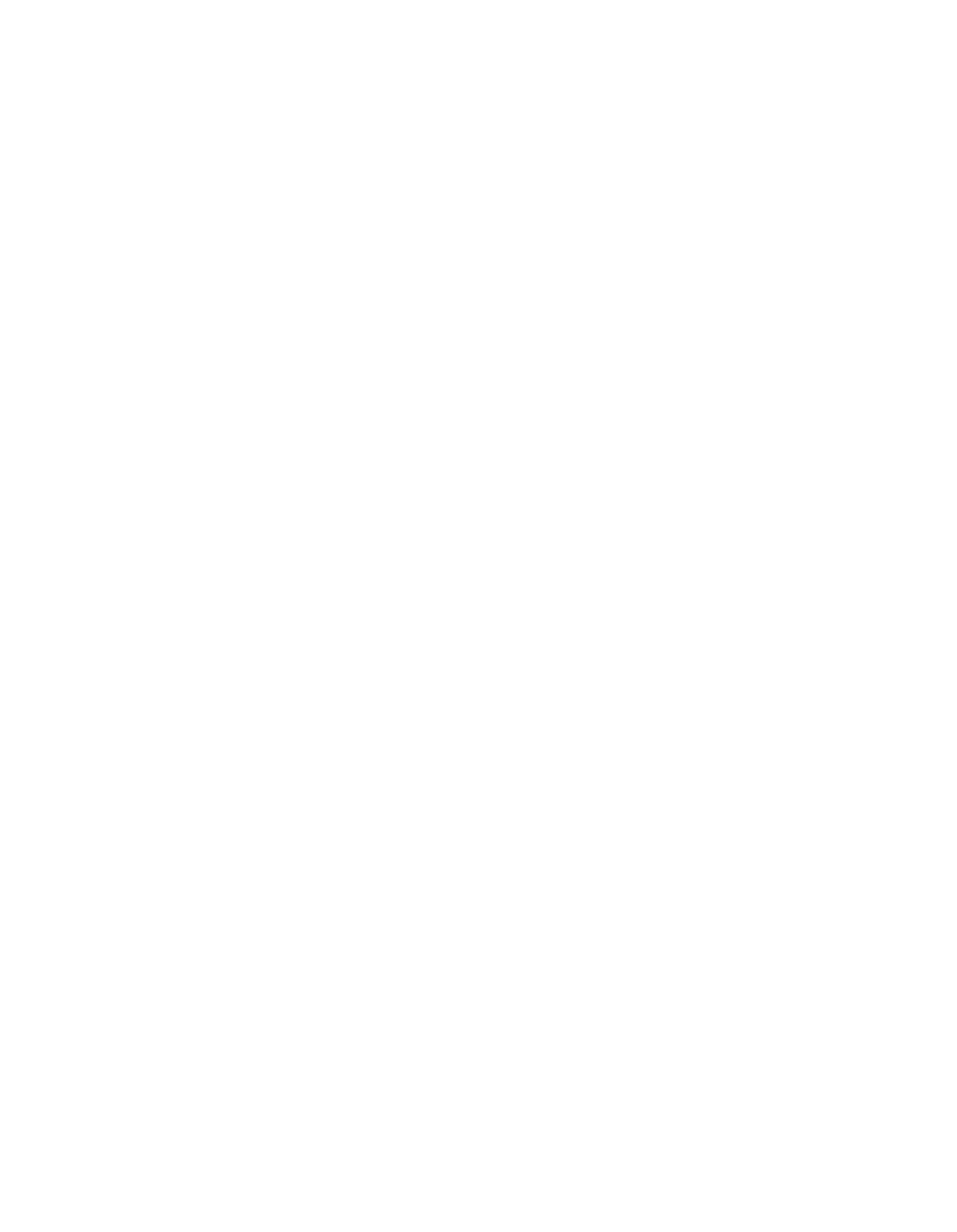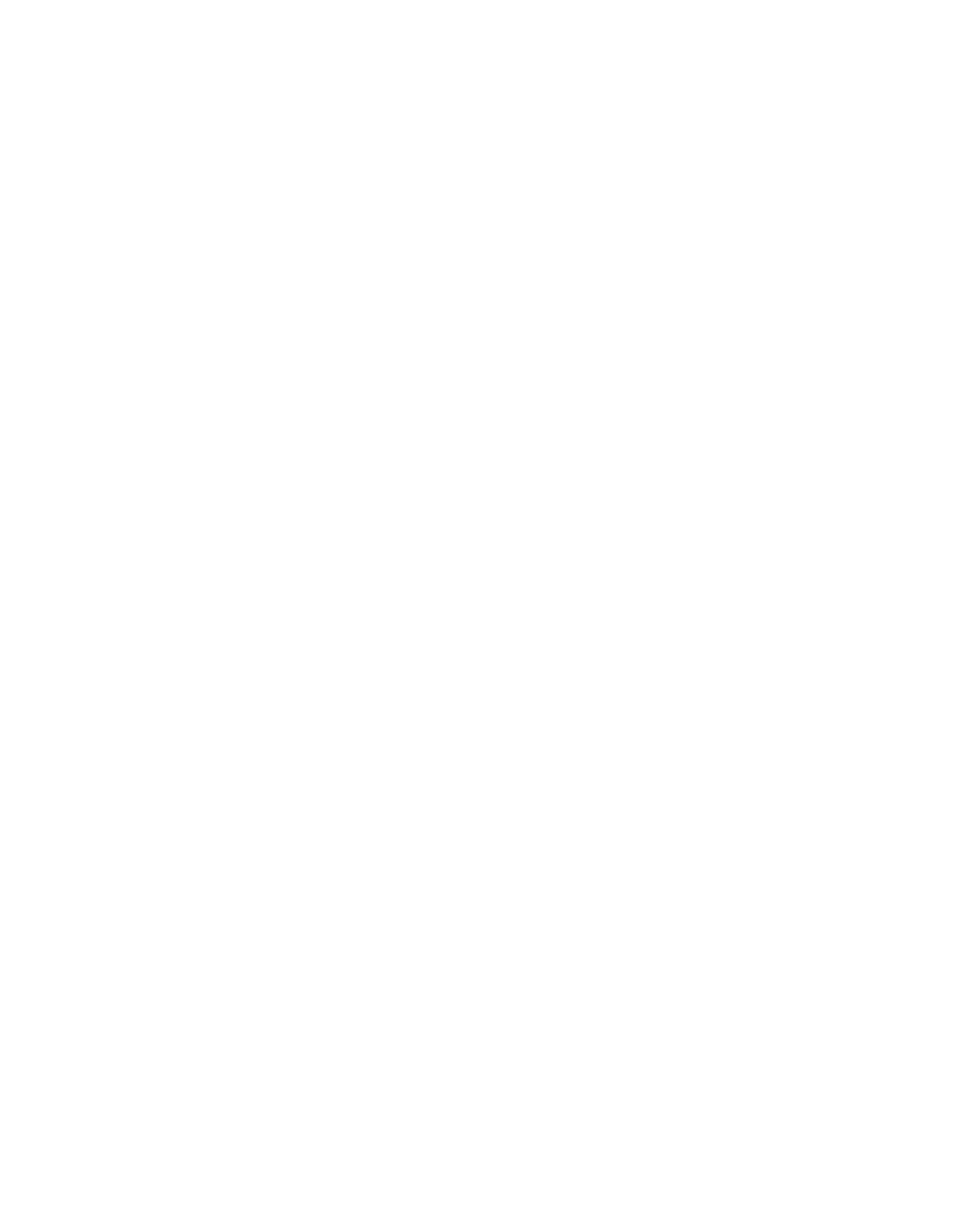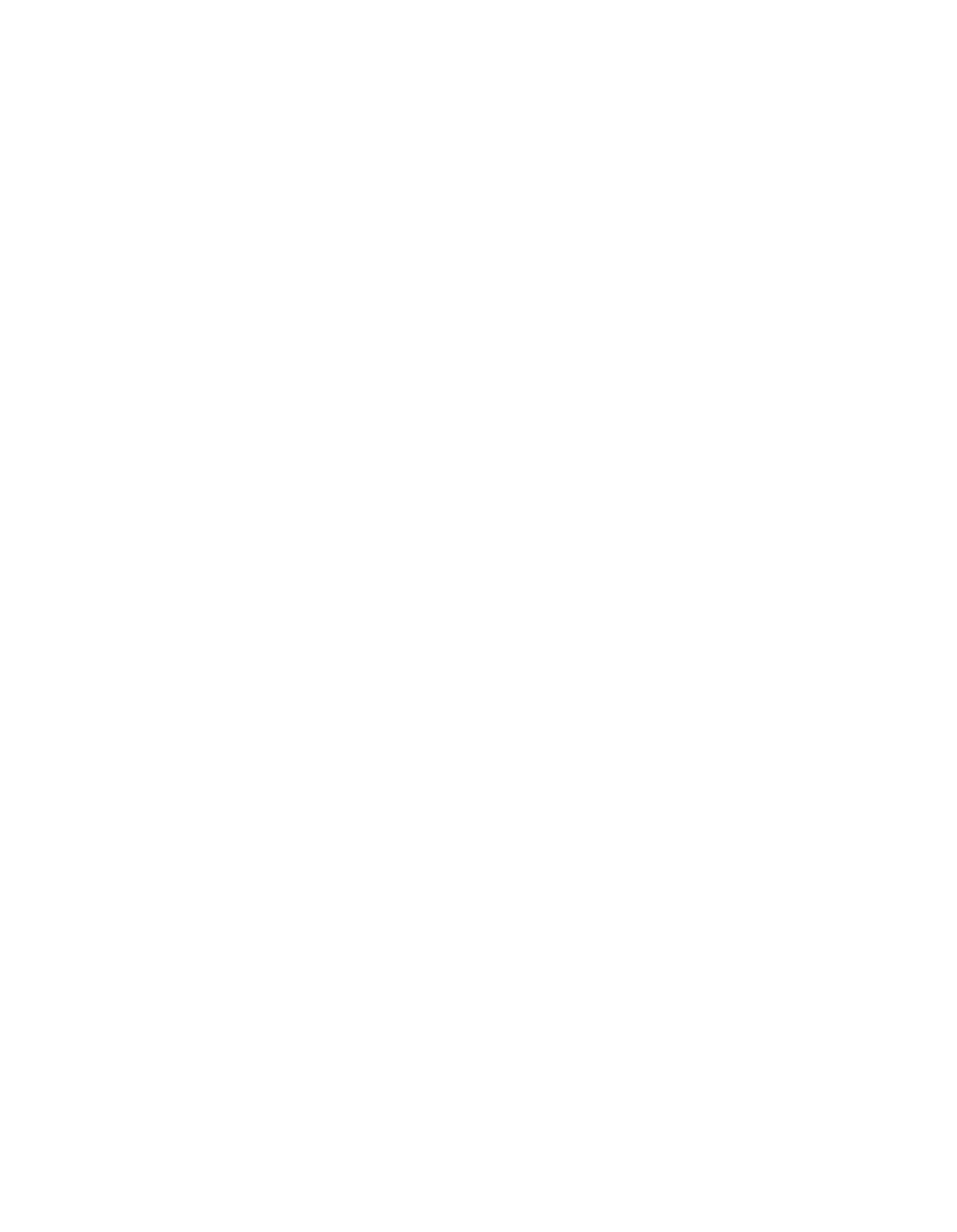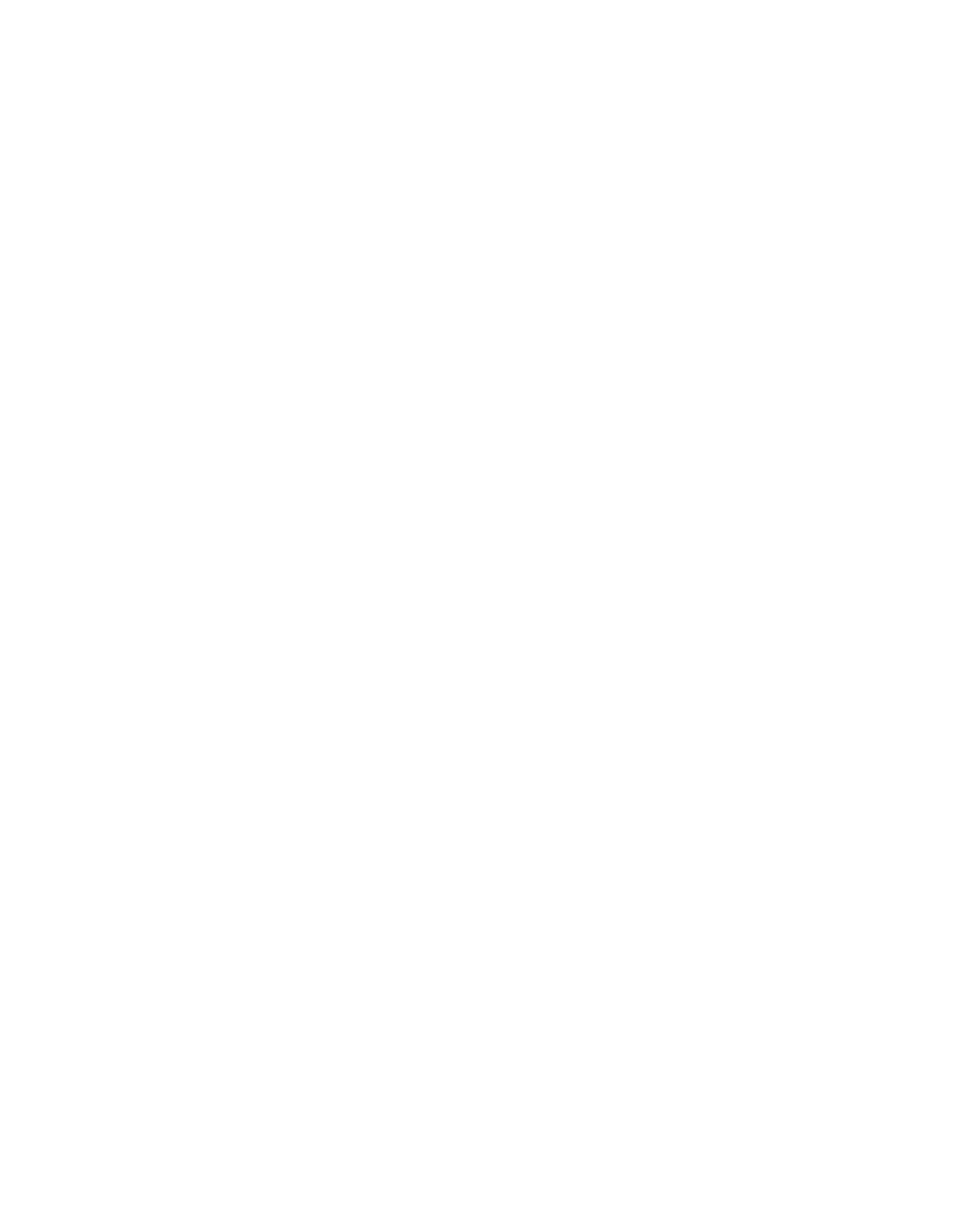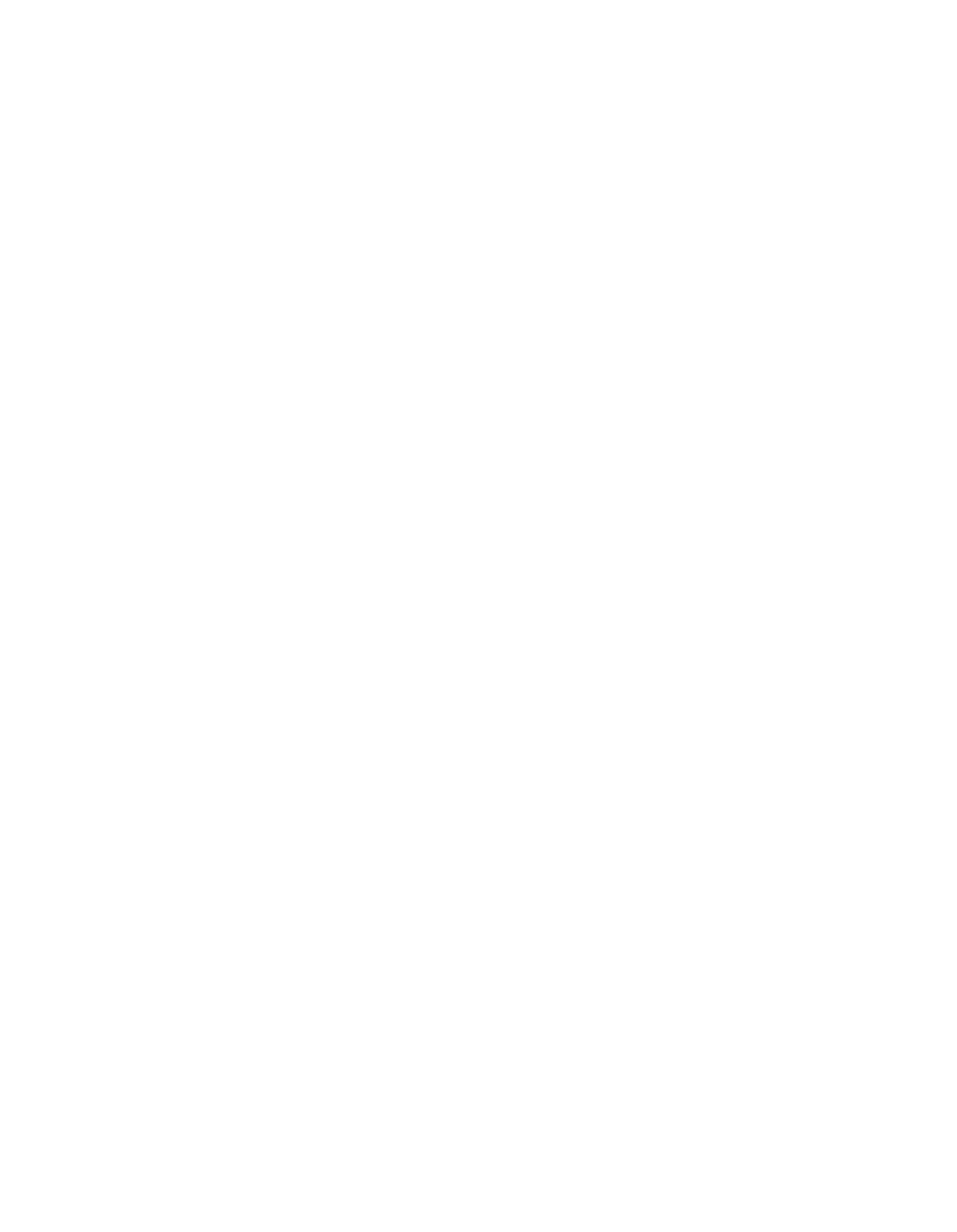ILLINOIS POLLUTION CONTROL BOARD
October 20,
1994
IN THE HATTER OF:
)
R94—17
RCRA SUBTITLE C UPDATE, USEPA
)
(Identical in Substance Rules)
(REGULATIONS 1-1-94 THROUGH
)
6—30—94)
)
Adopted Rule.
Final Order.
OPINION OF THE BOARD
(by E.
Dunham):
Pursuant to Section 22.4(a)
of the Environmental Protection
Act
(Act), the Board adopts amendments to the RCRA hazardous
waste
(RCRA)
regulations.
Section 22.4(a) provides for quick adoption of regulations
that are “identical in substance” to federal regulations adopted
by U.S. EPA to implement Sections 3001 through 3005 of the
Resource Conservation and Recovery Act of 1976
(RCRA,
42 U.S.C.
§S 6921—6925)
and that Title VII of the Act and Section
5 of the
Administrative Procedure Act
(APA)
shall not apply.
Because this
rulemaking is not subject to Section
5 of the APA,
it is not
subject to first notice or to second notice review by the Joint
Committee on Administrative Rules
(JCAR).
The federal RCRA
Subtitle C regulations are found at 40 CFR 260 through 268, 270
through 271,
and, more recently,
279.
This opinion supports an order adopted on the same day.
The
Board proposed these amendments by an opinion and order adopted
August 11,
1994.
Notices of proposed amendments appeared in the
Illinois Register on September 2,
1994,
at 18 Ill. Reg.
13173
(Part 720),
13184
(Part 721),
13242
(Part 725),
13257
(Part 728),
13295
(Part 724),
13310
(Part 739),
and 13335
(Part 704)
FEDERAL ACTIONS CONSIDERED IN THIS RULEMAKING
This rulemaking updates the Illinois RCRA Subtitle C rules
to correspond with federal amendments made in the period from
January 1 through June 30,
1994.
The IJSEPA actions during this
period are as follows:
Federal Action
Summary
59 Fed. Reg.
458,
Determination not to regulate wastes
January
4,
1994
from wood surface protection as listed
hazardous wastes; update of SW-846 to
include a new method; addition of four
chemicals to listing of hazardous
constituents
2
59 Fed. Reg.
8362,
Amendment of treatability study
February 18,
1994
exclusion from definition of solid waste
59 Fed. Reg.
10550,
Clarification of used oil regulations to
March 4,
1994
clarify that used oil mixed with crude
oil or natural gas liquids is exempted
from the used oil regulations; exemption
of crude oil mixed with small amounts of
used oil that is destined for insertion
into a refining process; exclusions for
certain activities from regulation as
used oil processing
59 Fed. Reg.
13891,
Amendment of handling codes for periodic
March 24,
1994
T/S/D facility reports
59 Fed. Reg.
28484,
Corrections to the wood surface
June 2, 1994
protection determination amendments
59 Fed. Reg.
29372,
Response to Supreme court remand in City
June 7,
1994
of Chicacio v. Environmental Defense
Fund,
Inc.,
——
U.S.
——,
114 S. Ct.
1588,
128 L.
Ed.
2d 302
(1994)
:
U.S. EPA
granted an extension for facilities
managing waste-to—energy facility ash to
file a Part A permit application.
59 Fed. Reg. 29958,
Amendment of references to the
June 10,
1994
prescribed form for a letter of credit
Used for RCRA Subtitle C, underground
injection, and underground storage tanks
to indicate copyright
59 Fed. Reg.
31551,
Correction of hazardous waste listing
June 20,
1994
(P015), hazardous constituent listing,
and land disposal restrictions listing
for berlyllium to beryllium powder
The June 7,
1994 action did not result in federal regulatory
amendments.
Rather,
it constituted a U.S. EPA determination that
substantial confusion existed relating to the regulatory status
of a waste, and it granted an extension of the time by which
facilities managing the waste must file a Part A permit
application.
Although no Board action is required based on the
June 7 federal action, we undertake an amendment discussed in
greater detail below.
PUBLIC COMMENTS
The Board received public comment on this proposal for 45
days following its publication On September 2,
1994 in the
3
Illinois Reciister.
During that period, the Board received the
following comment:
PC
1 Secretary of State, Index Department, Administrative
Code Division, by Connie Bradway (October 19,
1994)
By this public comment, the Secretary of State suggested a small
number of Illinois Administrative Code format corrections.
These
are discussed below.
In addition to the public comment, the Board recieved a
series of documents from the Joint Committee on Administrative
Rules
(JCAR) entitled “Identical First Notice Line Numbered
Version”.
These include indications of corrections to format,
grammar, punctuation,
etc.
Further, JCAR staff communicated with
Board staff by telephone on these and additional questions and
corrections.
The corrections are discussed below.
The Board will delay filing the adopted rules with the
Secretary of State for 30 days after adoption, particularly to
allow U.S. EPA review and comment.
The complete text of the
adopted amendments appears in a separate order adopted this day.
During the pendency of the prior update docket,
R94-7, the
Board received a request from JCAR staff that the Board make
certain minor corrections to the text of Part 739.
We added
those corrections to this docket.
Those minor corrections
involve Sections 739.152(b)(1)(B)
and
(b) (6) (H) (iii)
and
739.171(a).
The nature of the corrections is readily apparent on
the face of the order, so the Board will discuss them no further.
HISTORY OF RCRA SUBTITLE C, UST and UIC ADOPTION
AGENCY OR BOARD ACTION?
EDITORIAL CONVENTIONS
The Board appended three routine discussions at the end of
this opinion.
The first is
a summary history of the Illinois
RCRA Subtitle C and UIC programs.
It lists all actions taken to
adopt and maintain these programs since their inceptions.
It
includes a listing of all site-specific rulemaking and adjusted
standards proceedings filed that relate to these programs.
It
also lists all U.S. EPA program authorizations issued to date.
The second is a discussion of how the Board codifies requirements
that call for state determinations,
such as for exemptions,
exceptions,
etc.
The third discussion relates to our use of
language in the codification of identical—in—substance rules.
We
intend these as reference aids for interested persons in the
regulated community.
4
DISCUSSION
The federal actions that underlie this proceeding require
amendment of the Illinois RCRA Subtitle C regulations.
This
discussion briefly focuses on each by subject matter, indicating
the specific details of the actions taken by the Board where
pertinent.
Revised Reference for Letter of Credit Form—-Sections 704.240
&
724.251
U.S. EPA revised references to the required form for using a
letter of credit to provide financial assurance under the RCRA
Subtitle C, underground injection control, and underground
storage tank
(RCRA Subtitle I)
programs.
U.S. EPA added that the
form is copyrighted material.
The amendments appeared at 59 Fed.
Reg. 29958,
on June 10,
1994.
U.S. EPA amended 40 CFR 144.70(d)
(UIC)
(corresponding with 35 Ill. Adm. Code 704.240), 264.151(d)
and
(k)
(RCRA Subtitle C)
(corresponding with 35 Ill.
Adiu.
Code
724.251), and 280.99
(UST).
The Board followed the federal amendments without deviation.
We included the UIC amendment in this docket for the sake of
expedience,
since the amendment is simple and straightforward and
it is easier to deal with it together with the parallel RCRA
Subtitle C amendment.
Since Section 22.4(d) (3) expressly
excludes financial assurance regulation by the Board in the UST
area, no amendments were necessary to Part 731.
The Board invited comment on our approach to codification of
these federal amendments and received none.
We construe silence
as acceptance of the chosen approach.
Decision Not to List Cholorophenolic Wood Surface Protection
Wastes——Sections 720.111
& 720.Appendix H
U.S. EPA decided not to regulate certain wood surface
protection wastes as listed hazardous wastes on January 4,
1994,
at 59 Fed. Reg. 458.
U.S. EPA simultaneously announced its
intent to reassess its determination if use of chlorophenolics
for wood surface preservation resumes in the future.
There is
presently no active pesticide registration for chlorophenolics in
the United States, and registration is required under the Federal
Insecticide, Fungicide,
and Rodenticide Act
(FIFRA) for
production and use of any pesticide in this country.
Although it decided not to regulate the wastes as listed
wastes, U.S. EPA amended “Test Methods for Evaluating Solid
Waste, Physical/Chemical Methods”
(SW—846) to add Method 4010,
an
immunoassay method for the presence of pentachlorophenol.
Thus,
U.S. EPA amended the reference to SW-846 at 40 CFR 260.11 (a)
(corresponding with 35 Ill. Adm. Code 720.111(b))
to include
5
Update hA.
U.S. EPA corrected the reference
,
at 59 Fed. Reg.
28484,
on June 2,
1994, to indicate that Updates II and IIA to
SW-846 are available from the Methods Information Communication
Exchange
(MICE)
Service,
rather than from the Government Printing
Office.
On January 4,
1994, U.S. EPA also added four alkaline earth
salts of chlorophenates to the list of hazardous constituents of
40 CFR 261.Appendix VIII
(corresponding with 35
Ill.
Adm. Code
721.Appendix H).
Added were potassium pentachiorophenate, sodium
pentachlorophenate, and the sodium and potassium salts of
2,3,4,6-Tetrachlorophenol.
(U.S.
EPA,
in deciding to add these
four compounds, decided not to similarly add two other related
compounds:
octachlorodibenzodioxin
(OCDD) and octachlorodibenzo—
furan (OCDF).)
The Board has followed the federal amendments without
deviation.
The Board invited comment on our approach to
codification of these federal amendments and received none.
We
construe silence as acceptance of the chosen approach.
Response to City of Chicago remand/Extension of Permit
A~~1jcationDeadline for Facilities Managing Ash from Waste—to—
Energy Facilities——Section 721.104
On June 7,
1994,
at 59 Fed. Reg. 29372, U.S. EPA formally
responded to the decision in Environmental Defense Fund.
Inc.
v.
City of Chicago,
——
U.S.
——,
114 5.
Ct.
1588,
128 L. Ed. 2d 302
(1994).
In that case, the Court determined that section 3001(i)
of RCRA
(42 U.S.C.
§ 6921(1)) does not exempt ash from the
incineration of non—hazardous municipal waste from regulation as
a hazardous waste.
Rather, the incinerator must use the
appropriate methods to determine whether its waste exhibits a
characteristic of hazardous waste.
If the waste exhibits a
characteristic, the generator must manage it as a hazardous
waste.
The history behind this is summarized in the Federal
Register discussion of the extension.
The Board repeats a few
highlights here.
In 1980,
40 CFR 261.4(b) (1)
(corresponding with
35 Ill.
Adin.
Code 721.104(b) (1)) excluded municipal solid waste
burned for energy recovery from regulation as hazardous waste if
certain conditions are met.
As part of the Hazardous and Solid
Waste amendments of 1984
(HSWA), Congress codified a
clarification of the exclusion at section 3001(i), which U.S. EPA
codified in 1985, announcing that it interpreted the exclusion to
not include the ash from burning the wastes.
Later,
in the late
80s, U.S. EPA took the position that the ash was exempted also.
The Environmental Defense Fund filed two suits, one involving the
City of Chicago, in the Northern District of Illinois, and
another involving Wheelabrator Technologies,
in the Southern
District of New York, seeking enforcement of the 1985
6
interpretation.
The Second Circuit ultimately ruled in favor of
the exemption in Environmental Defense Fund,
Inc.
v. Wheelabrator
Technologies,
Inc.,
931 F.2d 211
(2d Cir.), cert denied, 112
S.
Ct.
453
(1991).
The Seventh Circuit ultimately ruled that the
ash was not included in the exemption in City of Chicago
V.
Environmental Defense Fund,
Inc., 948 F.2d 345
(7th Cir.
1991).
The Supreme Court affirmed the Seventh Circuit’s decision, and
the City of Chicago appealed to the Supreme Court.
The Supreme
Court’s May 2,
1994 affirmance of the Seventh Circuit’s decision
resulted in the U.S. EPA action of June 7,
1994.
U.S. EPA determined that substantial confusion existed as to
whether the ash was a hazardous waste,
so, pursuant to 40 CFR
270.10(e) (2),
it is allowing persons managing the ash until
December 7,
1994 to file a Part A permit application.
U.S. EPA
will not require immediate RCRA
§ 3010 notification.
This will
allow those facilities that submit the application to continue
managing the waste as they operate under interim status.
However, the facilities must immediately comply with the
appropriate hazardous waste management standards.
From the
perspective of the land disposal restrictions,
U.S. EPA will
consider the ash as a “newly—listed” waste.
Land disposal
restrictions will go into effect when U.S. EPA promulgates them--
in about six months.
The effect of the federal action varies from state to state,
depending on the state’s authorization status and whether it has
a codified ash exemption.
Illinois does not have a codified ash
exemption,
so the Supreme Court’s decision went into effect in
Illinois, as a matter of federal law, when handed down and no
program revision is necessary to comply with the federal
preemption requirements.
Nevertheless, although this federal action does not
technically require any Board action, the Court’s decision
amounts to a change of law.
Since the construction of the
Illinois RCRA Subtitle C regulations depends so heavily on the
federal interpretation of the statute and U.S. EPA rules, the
decision is tantamount to the expiration of an exemption.
Despite the fact that U.S. EPA has not amended its rules based on
the remand, the Board undertook an amendment.
To notify the
regulated community of the change in law, the Board added an
explanatory Board Note at the end of Section 721.104(b).
This
note explains that the Supreme Court has determined that the ash
is not covered by the exclusion,
and persons managing ash that
meets the criteria for a characteristic waste, under Subpart C,
must submit a Part A permit application by December 7,
1994.
The Board invited comment on its approach to the
City
of
Chicago remand and U.S. EPA response and received none.
We
construe silence as acceptance of the chosen approach.
7
Expansion of Treatabilitv Study Exclusion—-Section 721.104
U.S. EPA expanded an existing exclusion from the definition
of solid waste for varying amounts of hazardous waste used for
treatability study.
The amendments to 40 CFR 261.4 (e) (2),
(e) (3),
and
(f) (3) through
(f) (5)
(corresponding with
35 Ill.
Adm. Code 721.104(e)(2),
(e)(3), and (f)(3) through (f)(5))
occurred at 59 Fed. Reg.
8362, on February 18,
1994.
The amendments essentially changed the usage “soils, water
or debris contaminated with hazardous waste” to “media
contaminated with hazardous waste” and expanded the amounts of
these materials that are exempted.
Unaffected was the amount of
hazardous waste itself that is exempted from regulation as
hazardous waste.
Thus,
exempted for study are up to 10,000 kg
(formerly 1,000 kg) of media contaminated with hazardous waste or
up to 2,500 kg (formerly 250 kg) of media contaminated with acute
hazardous waste.
(The exemption remains for up to 1,000 kg of
hazardous waste or up to
1 kg of acute hazardous waste.)
Also,
the generator or accumulator may ship in a single shipment up to
10,000 kg
(formerly 1,000 kg) of media contaminated with
hazardous waste or 2,500 kg
(formerly 1 kg)
of media contaminated
with acute hazardous waste.
(Unaffected was the shipment limit
of 1,000 kg of hazardous waste or 1 kg of acute hazardous waste.)
Finally,
extensions of time are available for treatability
studies.
An extension of time is available for up to an
additional 5,000 kg
(formerly 500 kg)
of media contaminated with
hazardous waste or 2,500 kg
(formerly 1 kg)
of media contaminated
with acute hazardous waste.
(The extension limits of 500 kg and
1 kg remain for hazardous waste and acute hazardous waste,
respectively.)
The amendments also allow up to an additional two
years of study for bioremediation studies.
Burlington Environmental Inc. filed a rulemaking proposal on
July 1,
1994, requesting that the Board adopt the expanded
treatability studies exemption.
The Board docketed that
proceeding as R94-18.
On July 18, Burlington requested that the
Board adopt the expansion in R94—18 as an emergency amendment.
The Board declined to adopt the amendments by emergency
rulemaking on July 21,
1994.
Rather, the Board requested
comments on whether the proposed amendments in this docket, R94—
17 addressed Burlington’s concerns.
The Board decided to
expedite this matter to confer the benefits of the expanded
exepmtion as soon as possible.
The Board followed the federal amendments without
significant deviation.
We made minor clarifying revisions to the
federal base text of Section 720.104(e)(3)(A).
The Board invited
comment on its approach to codification of these federal
amendments and received none.
We construe silence as acceptance
of the chosen approach.
8
Corrected Listings for Beryllium Powder——Sections 721.133.
721.Appendix H
& 728.142
U.S. EPA amended 40 CFR 261.33(e)
(corresponding with 35
Ill. Adm. Code 721.133 (e)),
261, Appendix VIII (corresponding 35
Ill. Adm. Code 721.Appendix H), and 268.42
(corresponding 35
Ill.
Adm. Code 728.Table D) at 59 Fed.
Reg. 31551
(June 20,
1994).
These amendments change all the entries for beryllium dust,
in
the P015 listing for hazardous waste,
in the hazardous
constituents table, and in the land disposal restrictions, to
“beryllium powder”.
U.S. EPA designated this action a technical
correction,
of an April 22,
1988 action,
at 53 Fed. Reg.
13383,
so the correction was immediately effective without notice and
comment.
The Board adopted the federal technical correction without
deviation.
These amendments were not proposed in the August 11,
1994 order because we accelerated these amendments to adopt the
expanded exemption for treatability studies as soon as possible,
as discussed above.
We did not have the full listing of all
federal actions that occurred during June,
1994 at that time.
Revised T/S/D Facility Reporting Codes——Sections 724.Appendix A
&
725.Ap~endixA
U.S. EPA revised the codes used by hazardous waste
treatment,
storage, and disposal
(T/S/D) facility reports in a
set of technical amendments made on March 24,
1994,
at 59 Fed.
Reg.
13891.
Amended were 40 CFR 264, Appendix
I and 265,
Appendix I
(corresponding with 35 Ill. Adm. Code 724.Appendix A
and 725.Appendix A).
Both appendices,
formerly only referenced
in the Illinois
RCRA
Subtitle C regulations, are now formally
incorporated by reference.
The Board followed the federal amendments without deviation
by updating the existing incorporations by reference.
The Board
invited comment on its approach to codification of these federal
amendments and received none.
We construe silence as acceptance
of the chosen approach.
Used Oil Mixed with Crude Oil or Natural Gas Liquids
Exemptions——Sections 739.100, 739.110,
739.120,
739.141,
739.144,
739.146, 739.153
& 739.163
On March 4,
1994,
at 59 Fed.
Reg.
10550, U.S. EPA amended
the used oil regulations, primarily to revise a number of
exemptions and exclusions.
U.S. EPA amended 40 CFR 279.1
(definitions of “petroleum refining facility” and “used oil
transfer facility”)
(corresponding with 35 Ill. Adm. Code
739.100),
279.10(b) (2) (iii)
and
(g)
(corresponding with 35
Ill.
Adm. Code 739.110(b) (2) (C)
and (g)), 279.20(b)(2)
(corresponding
with 35 Ill. Adm. Code 739.120(b) (2)),
279.41(c)
(corresponding
9
with 35 Ill. Adm. Code 739.141(c)), 279.46(a)(5) and (b)(5)
(corresponding with 35 Ill.
Adm. Code 739.146(a) (5)
and
(b) (5)),
279.53(c)
(corresponding with 35 Ill. Adm.
Code 739.153(c)), and
279.63(c)
(corresponding with 35 Ill. Adm. Code 739.163(c)).
First,
the amendments to sections 279.1 and 279.10(g)
(739.100 and 739.110(g))
expand an exemption for certain used oil
mixtures from regulation.
Now exempted from regulation are the
transportation and storage of mixtures of small amounts (less
than one percent)
of used oil and crude oil that are inserted
into a crude oil pipeline or petroleum refining process at a
point before catalytic cracking or distillation.
Expressly
regulated, however,
is all management of the used oil up to the
point of insertion into the pipeline or refining process.
Second, the amendments to sections 279.1,
279.10(b) (2)
(iii),
and 279.20(b) (2)
and 279.41(c)
(739.100,
739.110(b) (2) (C), and
739.120(b) (2)
and 739.141(c)) add two exemptions from the used
oil processor and re—refiner requirements.
The first added
exemption is that a transporter that filters used oil from oil-
bearing transformers and turbines and returns it for its original
use is not regulated as a processor or re—refiner.
The second is
that certain generator activities are not subject to the used oil
processor requirements.
These activities include filtering,
cleaning,
or otherwise reconditioning before reuse by the
generator; separating used oil from wastewater generated on—site
to make the wastewater acceptable for discharge or reuse; using
oil mist collectors to remove oil from in—plant air for continued
recirculation; draining or otherwise removing excess used oil
from materials containing or otherwise contaminated; and
filtering,
separating, or otherwise reconditioning used oil
before burning it in a space heater.
Third, U.S. EPA amended section 279.46(a) (5)
and (b)(5)
(739.146(a) (5)
and (b)(5))
so that an intermediate rail
transporter is no longer required to sign records for loads of
used oil.
Generally,
a used oil transporter is required to sign
for acceptance and delivery of used oil and maintain certain
records.
An intermediate rail transporter must still maintain
the records, but needs no longer sign for acceptance or delivery.
Finally, the federal amendments to sections
279.10(b) (1)
(ii),
279.53(c),
and 279.63(c)
(739.110(b)(1)(B),
739.153(c),
and 739.163(c))
remove the price for the third
edition of “Test Methods for Evaluating Solid Waste, Physical!
Chemical Methods”
(SW-846)
from the text of the rules.
U.S. EPA
noted that the price for that volume was $319.00, rather than the
$110.00 formerly erroneously codified in the regulations.
The Board followed the federal amendments without
significant deviation.
We made minor clarifying revisions to the
federal base text of Sections 739.110(g) (4), 739.120(b),
10
739.141(c),
and 739.146(a) (5) (A) and (b)(5)(A).
The Board invited comment on its approach to codification of
these federal amendments and received none.
We construe silence
as acceptance of the chosen approach.
Corrected References to SPCC Regulations—-Sections 724.152.
724.156, 725.152, 725.156
& 739.152
40 CFR 264.52(b),
264.56(d) (2), 265.52(b),
265.56(d) (2), and
279.52(b)(2)(ii) and
(b)(6)(iv)(B)
(corresponding with 35 Ill.
Adm. Code 724.52(b),
724.56(d) (2), 725.52(b),
725.56(d) (2), and
739.52(b) (2) (B) and (b)(6)(D)(ii)) include references to the
federal Spill Prevention Control and Countermeasures
(SPCC) Plan
regulations at 40 CFR 1510.
Formerly codified at federal part
1510, U.S. EPA redesignated those regulations as 40 CFR 300 on
July 16,
1982, at 47 Fed. Reg. 31202.
U.S. EPA never updated the
references to the SPCC regulations contained in the hazardous
waste rules.
In fact, when U.S. EPA added part 279, on September
10,
1992,
it used the invalid references to the SPCC rules.
Prompted by public inquiries regarding the intent of the
regulations, the Board corrected all six references to the SPCC
rules to correctly refer to 40 CFR 300.
We undertook this action
without regard to the fact that US. EPA has not moved to make
this correction.
We invited public comment on these corrections and received
none.
We construe silence as acceptance of the chosen approach.
General Revisions
The Board continued to change its method of referring to the
United States Environmental Protection Agency in this present
rulemaking.
We began using this changed usage in update docket
R93-16 and continued in R94-7.
We now refer to “U.S.
EPA”, which
we believe is a more conventional and clearly understood in the
context of the Illinois regulations than either “USEPA” or “EPA”.
We further began to refer to the “U.S.
EPA hazardous waste
number” and “U.S.
EPA document number” for similar clarity.
This
changed usage occurs only in the Sections opened in this
proceeding, and we will continue this conversion in future
rulemakings as additional Sections otherwise become open to
amendment.
The Board also continued its move toward presentation of
equations and expressions in standard scientific notation.
Thus,
in Section 721.Appendix H, we used the appropriate chemical
notation.
For example, we replaced “H3A5O4” with
“H3A5O4”, as
formerly used for arsenic acid.
We believe that any person
sophisticated enough to understand the chemical equations will
11
more readily recognize them in the standard mathematical
notation, as they appear in the federal original.
In that
Section we also corrected the chemical name in the entry for
aldrin by adding a missing parentheses.
The Board also
substituted “or” for
“/“
in Section 720.104
(b) (7) (L) and
(b) (7) (Q) and “and” for
“I”
in Section 720.104(b) (7) and
(b) (7) (N).
The Board also used this opportunity to make a number of
corrections to punctuation, grammar, and cross—reference format
throughout the opened text.
Where the cross—references within
the text to other segments of the Illinois Administrative Code
did not formerly comport with the standard format, the Board made
the necessary changes.
We also changed “who” to “that” and “he”
to “it”, where the person to which the regulation referred was
not necessarily a natural person,
or to “he or she”, where a
natural person was evident; changed “which” to “that” for
restrictive relative clauses; substituted “shall” for “will”;
capitalized the Section headings and corrected their format where
necessary; and corrected punctuation within sentences.
Public Comment—Based Corrections
As mentioned above, the Board received several suggestions
from
JCAR
staff and the Secretary of State for corrections to the
text of the amendments as proposed.
The Board tabulates the
suggested corrections and our resulting actions as follows
(sources of suggested corrections are indicate with ~ indicating
JCAR,
2
indicating the Secretary of State, and ~ indicating Board—
initiated;
*
denotes Section not included in proposed rule):
Section~”~
Board Action
704. Main Source
Add “and 27” to ILCS citation
Note1
704.109~
Put “BOARD NOTE”
in upper case
721.104(a) (6)1
Replace semicolon with period
721.104(b) (12)’
Retain comma
(JCAR
suggested deleting
comma, but doing so changes sense of
sentence)
721.104(d) (2)’
Delete added comma between subsection
references
721.104(e)
(3)1
Add colon at end
721.104(e) (3) (C)~2
721.104(e) (3) (B)’
721.104(e) (3) (C)1
721.104(e) (3) (G)3
721.104(f)
(5)1
721.104(f) (9) (F)3
721.104(f) (9) (G)’
721.Appendix H
(entries for calcium
chromate, calcium
cyanide, nickel
carbonyl, nickel
cyanide, nitrogen
dioxide,
osmium
tetroxide, selenium
sulfide, thallium
(I)
oxide, thiram,
zinc cyanide, and
zinc phos~hide (both
entries))
&3
721.Appendix H
(entry for vanadium
3
725.Appendix
A1
728.142(b)1
728.Table
D1
739.110(g) (5)’
739.153’
12
Renumber subsections
(A)
through
(E)
as
(C)(i) through
(C)(v)
Change “requests to” to “requests for”
Remove comma before “above”
Remove comma at end
Correct spelling of “receipt”
Add “and” at end
Change semicolon to period
Delete struckout numbers and underlining
from subscripted numbers
Indicate numbers in empirical formula as
subscripted
Change heading to “Recordkeeping
Instructions”
Correct ILCS citation format
Remove overstruck “and/” from text
Remove duplicate “into”
Add Section source note
HISTORY OF
RCRA
Subtitle C, UST and UIC ADOPTION
The Illinois UIC (Underground Injection Control),
RCRA
(Resource Conservation and Recovery Act)
Subtitle C, and UST
(Underground Storage Tank)
regulations, together with more
stringent state regulations particularly applicable to hazardous
13
waste,
include the following Parts of Title 35 of the Illinois
Administrative Code:
700
Outline of Waste Disposal Regulations
702
RCRA
Subtitle C and UIC Permit Programs
703
RCRA
Subtitle C Permit Program
704
UIC Permit Program
705
Procedures for Permit Issuance
709
Wastestream Authorizations
720
General
721
Identification and Listing
722
Generator Standards
723
Transporter Standards
724
Final TSD Standards
725
Interim Status TSD Standards
726
Specific Wastes and Management Facilities
728
USEPA Land Disposal Restrictions
729
Landfills:
Prohibited Wastes
730
UIC Operating Requirements
731
Underground Storage Tanks
732
Petroleum Underground Storage Tanks
738
Hazardous Waste Injection Restrictions
739
Standards for the Management of Used Oil
Special provisions for
RCRA
Subtitle C cases are included in
Parts 102,
103,
104 and 106 of the Board’s procedural rules.
History of
RCRA
Subtitle C and State Hazardous Waste Rules
Adoption
The Board has adopted and amended the Resource Conservation
and Recovery Act
(RCRA)
Subtitle C hazardous waste rules in
several dockets.
Dockets R81-22 and R82-18 dockets dealt with
the Phase I
RCRA
Subtitle C regulations.
U.S. EPA granted
Illinois Phase
I authorization on May 17,
1982,
at 47 Fed. Reg.
21043.
The Board adopted
RCRA
Subtitle C Phase II regulations in
Parts 703 and 724 in dockets R82—19 and R83—24.
U.S. EPA granted
final authorization of the Illinois
RCRA
Subtitle C “base
program” on January 31,
1986, at 51 Fed. Reg. 3778
(January 30,
1986).
U.S. EPA granted authorization to “Cluster
I revisions”
to the Illinois program and granted partial Hazardous and Solid
Waste Amendments
(HSWA)
(Pub.
L.
98-616, Nov.
8,
1984)
authorization effective March
5,
1988,
at 53 Fed. Reg.
126
(January 5,
1988).
U.S. EPA authorized certain subsequent
amendments and granted further partial HSWA authorizations
effective April 30,
1990,
at 55 Fed. Reg. 7320 (March
1,
1990),
and June 3,
1991,
at 56 Fed. Reg.
13595
(April
3,
1991); and
August 14,
1994, at 59 Fed. Reg.
30525
(June 14,
1994).
U. S. EPA
codified its approvals of the Illinois program at 40 CFR 272.700
and 272.701 on November 13,
1989, at 54 Fed. Reg. 37649
(Sep.
12,
1989), and on March 31,
1992,
at 57 Fed. Reg.
3731
(Jan.
31,
1992).
The entire listing of all
RCRA
Subtitle C identical in
14
substance rulemakings follows
(with the period of corresponding
federal revisions indicated in parentheses):
R81-22
45 PCB 317, September 16,
1981
& February 4,
1982;
6 Ill.
Reg.
4828, April 23,
1982,
effective May
17,
1982.
(5/19/80 through 10/1/81)
R82—18
51 PCB 31, January 13,
1983;
7 Ill. Reg.
2518,
March 4,
1983, effective May 17,
1982.
(11/11/81
through 6/24/82)
R82—19
53 PCB 131, July 26,
1983,
7
Ill.
Reg.
13999,
October 28,
1983, effective October
2,
1983.
(11/23/81 through 10/29/82)
R83—24
55 PCB 31, December 15,
1983,
8 Ill. Reg.
200,
January
6,
1984, effective December 27,
1983.
(Corrections to R82-19)
R84—9
64 PCB 427
& 521, June 13
& 27,
1985;
9 Ill. Reg.
11964, August 2,
1985, effective July
8
& 24,
1985.
(1/19/83 through 4/24/84)
R85—22
67 PCB 175,
479, December 20,
1985 and January
9,
1986;
10 Ill. Reg.
968, January 17,
1986,
effective January
2,
1986.
(4/25/84 through
6/ 30/85)
R86—1
71 PCB 110, July 11,
1986;
10 Ill.
Reg.
13998,
August 22,
1986, effective August 12,
1986.
(7/1/85 through 1/31/86)
R86—19
73 PCB 467, October 23,
1986;
10 Ill. Reg.
20630,
December 12,
1986, effective December 2,
1986.
(2/1/86 through 3/31/86)
R86—28
75 PCB 306, February 5,
1987; and 76 PCB 195,
March 5,
1987; 11 Ill. Reg.
6017,
April
3,
1987,
effective March 23,
1987.
Correction at 77 PCB
235, April 16,
1987;
11 Ill. Reg. 8684, May 1,
1987, effective April 21,
1987.
(4/1/86 through
6/30/86)
R86—46
79 PCB 676, July 16,
1987;
11 Ill. Reg.
13435,
August 14,
1987, effective August
4,
1987.
(7/1/86 through 9/30/86)
R87—5
82 PCB 391, October 15,
1987;
11 Ill. Reg.
19280,
November 30,
1987, effective November 10
& 12,
1987.
(10/1/86 through 12/31/86)
R87—26
84 PCB 491, December 3,
1987;
12 Ill. Reg.
2450,
15
January 29,
1988, effective January 15,
1988.
(1/1/87 through 6/30/87)
R87—32
Correction to R86-1;
81 PCB 163, September 4,
1987;
11 Ill.
Reg.
16698, October
16,
1987,
effective September 30, 1987.
R87—39
90 PCB 267, June 16,
1988;
12
Ill.
Reg.
12999,
August 12,
1988,
effective July 29,
1988.
(7/1/87
through 12/31/87)
R88—16
93 PCB 513, November 17,
1988;
13 Ill. Reg.
447,
January 13,
1989,
effective December 28,
1988.
(1/1/88 through 7/31/88)
R89—1
103 PCB 179, September 13,
1989;
13 Ill. Reg.
18278, November 27,
1989, effective November 13,
1989.
(8/1/88 through 12/31/88)
R89—9
109 PCB 343, March
8,
1990;
14 Ill. Reg.
6225,
April 27,
1990,
effective April
16,
1990.
(1/1/89
through 6/30/89)
R90—2
113 PCB 131, July 3, 1990;
14 Ill. Reg. 14401,
September 7,
1990, effective August 22,
1990.
(7/1/89 through 12/31/89)
R90—11
121 PCB 97, April
11,
1991; corrected at 122 PCB
305, May 23,
1991; corrected at 125 PCB 117,
August 8,
1991; uncorrected at 125 PCB 435, August
22, 1991;
15 Ill. Reg.
9323, effective June 17,
1991.
(Third Third Land Disposal Restrictions)
(4/1/90 through 6/30/90)
R90—17
Delisting Procedures
(See below)
R91—1
125 PCB 119, August
8,
1991;
15 Ill. Reg.
14446,
effective September 30,
1991.
(Wood Preserving
Rules)
(7/1/90 through 12/30/90)
R91—13
132 PCB 263, April 9,
1992;
16 Ill. Reg.
9489,
effective June 9,
1992.
(Boilers and Industrial
Furnaces
(BIF5) Rules)
(1/1/91 through 6/30/91)
R91—26
129 PCB 235, January
9, 1992;
16 Ill. Reg. 2600,
effective February 3,
1992.
(Wood Preserving
Rules Compliance Dates)
R92—1
136 PCB 121,
September 17,
1992;
16 Ill. Reg.
17636, effective November 6,
1992.
(7/1/91
through 12/31/91)
16
R92—10
138 PCB 549, January 21,
1993;
17
Ill.
Reg. 5625,
effective March 26,
1993.
(Leak Detection Systems
(LDS) Rules)
(1/1/92 through 6/30/92)
R93—4
——
PCB
——,
September 23,
1993;
17 Ill. Reg.
20545,
effective November 22,
1993.
(Used Oil Rules)
(7/1/92 through 12/31/92)
R93—16
-—
PCB
——,
March 17,
1994, Supplemental opinion
and order on April
21,
1994.
(1/1/93 through
6/30/93)
R94—7
——
PCB
——,
June 23,
1994,
18 Ill. Reg.
——,
effective July 29,
1994.
(7/1/93 through
12/31/93)
R94—17
This docket.
(1/1/94 through 6/30/94)
On September
6,
1984, the Third District Appellate Court
upheld the Board’s actions in adopting R82-19 and R83—24.
(Commonwealth Edison Co.
v.
PCB,
127 Ill.
App.
3d 446; 468 N.E.2d
1339
(3d Dist.
1984).)
The Board added to the federal listings of hazardous waste
by listing dioxins pursuant to Section 22.4(d) of the Act:
R84—34
61 PCB 247, November 21,
1984;
8
Ill.
Reg.
24562,
December 21,
1984, effective December 11, 1984.
This was repealed by R85-22, which included adoption of U.S.
EPA’S dioxin listings.
Section 22.4(d) was repealed by P.A. 85-
1048, effective January
1,
1989.
The Board has adopted U.S. EPA delistings at the request of
Amoco
and Envirite
(the date of the corresponding federal action
is included in parentheses):
R85—2
69 PCB 314, April 24,
1986;
10 Ill.
Reg.
8112, May
16,
1986, effective Nay 2,
1986.
(9/13/85)
R87—30
90 PCB 665,
June 30,
1988;
12 Ill. Reg.
12070,
July 22,
1988, effective July 12,
1988.
(11/14/86)
R91—12
128 PCB 369, December 19,
1991;
16 Ill.
Reg.
2155,
effective January 27,
1992.
(USX Corp.)
Subsequently, upon the April 30,
1990 federal authorization
of Illinois granting waste delistings,
U.S. EPA transferred
pending delisting petitions to the Board.
The Board docketed
these as site—specific rulemaking proceedings (the name of the
petitioner waste generator appears in parentheses):
17
R90—18
Dismissed at 123 PCB 65, June 6,
1991.
(USX
Corp.,
South Works)
R9O—19
Dismissed at 116 PCB 199, November 8,
1990.
(Woodward Governor Co.)
R90—23
Dismissed at 124 PCB 149, July 11,
1991.
(Keystone Steel
& Wire Co.)
The Board has modified the delisting procedures to allow the
use of adjusted standards in lieu of site—specific rulemakings:
R90—17
119 PCB 181, February 28,
1991; 15 Ill.
Reg.
7934,
effective May 9, 1991.
Waste generators have filed Part 106 adjusted standard
petitions for solid waste determinations with the Board pursuant
to Section 720.130
(generator name in parentheses):
AS89—4
Dismissed at 105 PCB 269, November 15,
1989.
(Safety—Kleen Corp.)
AS89—5
Dismissed at 113 PCB 111, July 3,
1990.
(Safety-
Kleen Corp.)
AS9O—7
Dismissed at 124 PCB 125, July 11,
1991.
(Quantum
Chemical Co.)
Waste generators have filed Part 106 adjusted standard
petitions for hazardous waste delistings with the Board pursuant
to Section 720.122
(generator name in parentheses):
AS91—1
Granted at 130 PCB 113, February 6,
1992, and
modified at 133 PCB 189, April 23,
1992.
(Keystone Steel
& Wire Co.)
AS9I—3
Granted at 139 PCB 121, February 4,
1993; opinion
issued at 140 PCB
——,
March 11,
1993.
(Peoria
Disposal Co.)
AS93—7
Granted at
--
PCB
--,
February 17,
1994.
(Keystone Steel
& Wire Co.)
AS94-10
Presently pending.
The Board has procedures to be followed in cases before it
involving the
RCRA
Subtitle C regulations:
R84-10
62 PCB 87, 349, December 20,
1984 and January 10,
1985;
9
Ill. Reg.
1383, effective January 16,
1985.
18
The Board also adopted special procedures to be followed in
certain determinations under Part 106.
The Board adopted these
Part 106 special procedures in R85-22 and amended them in R86-46,
listed above.
One Part 106 adjusted standard proceeding filed pursuant to
728.106 sought relief from a prohibition against land disposal
(petitioner’s name in parentheses):
AS9O—6
Dismissed at 136 PCB 93,
September 17,
1992.
(Marathon Petroleum Co.)
Other adjusted standard proceedings sought relief from
aspects of the land disposal unit closure and post—closure care
requirements
(petitioners’ names in parentheses):
AS9O—8
130 PCB 349, February 27,
1992.
(Olin Corp.)
AS91—4
131 PCB 43, March 11,
1992.
(Amoco Oil Co.)
One adjusted standard proceeding sought relief from a RCRA
Subtitle C land disposal restriction (petitioner’s name in
parentheses):
A590—6
136 PCB 6, September 17,
1992.
(Marathon
Petroleum Co.)
Still another adjusted standard proceeding relates to
substantive treatment, storage, and disposal facility
requirements of the RCRA Subtitle C regulations
(petitioner’s
name and requirements involved in parentheses):
AS91—1O
Dismissed at
—-
PCB
-—,
May 19,
1994.
(Cabot
Corp.; secondary containment for tanks)
In another regulatory proceeding,
the Board has considered
granting temporary relief from the termination of an exclusion of
a hazardous waste listing in the form of an emergency rule (Peti-
tioner’s name in parentheses):
R91-11
Dismissed at 125 PCB 295, August 8,
1991.
(Big
River Zinc Corp.)
The Board has also adopted requirements limiting and
restricting the landfilling of liquid hazardous wastes, hazardous
wastes containing halogenated compounds, and hazardous wastes
generally:
R81—25
60 PCB 381, October 25, 1984;
8 Ill. Reg.
24124,
December 14,
1984, effective December 4,
1984.
19
R83—28
68 PCB 295, February 26,
1986;
10
Ill.
Reg. 4875,
March 21,
1986, effective March 7,
1986.
R86—9
Emergency regulations adopted at 73 PCB 427,
October 23,
1986;
10 Ill. Reg. 19787, November 21,
1986,
effective November 5,
1986.
The Board’s action in adopting emergency regulations in R86-
9 was reversed by the First District Court of Appeals.
(Citizens
for a Better Environment v. PCB,
152 Ill. App. 3d 105,
504 N.E.2d
166 (1st Dist.
1987)
.)
History of UIC Rules Adoption
The Board has adopted and amended Underground Injection
Control
(UIC)
regulations in several dockets to correspond with
the federal regulations.
One such docket,
R82-18, was a RCRA
Subtitle C docket.
U.S. EPA authorized the Illinois UIC program
on March 3,
1984,
at 49 Fed. Reg.
3991
(Feb.
1,
1984); codified
that approval as 40 CFR 147, Subpart 0, at 49 Fed. Reg.
20197
(May 11,
1984); and amended the authorization at 53 Fed. Reg.
43087
(Oct.
25, 1988).
The entire listing of all UIC rulemakings
follows
(with the period of corresponding federal revisions
indicated in parentheses):
R81—32
47 PCB 93, May 13,
1982;
6
Ill. Reg.
12479,
October 15,
1982, effective February 1,
1984.
(7/7/81 through 11/23/81)
R82—18
51 PCB 31, January 13,
1983;
7 Ill. Reg.
2518,
March 4,
1983, effective Nay 17,
1982.
(11/11/81
through 6/24/82)
R83—39
55 PCB 319, December 15,
1983;
7
Ill. Reg.
17338,
December 20,
1983, effective December 19,
1983.
(4/1/83)
R85—23
70 PCB 311
& 71 PCB 108, June 20
& July 11,
1986;
10 Ill. Reg.
13274, August 8,
1986, effective July
28
& 29,
1986.
(5/11/84 through 11/15/84)
R86—27
Dismissed at 77 PCB 234, April
16,
1987.
(No U.S.
EPA amendments through 12/31/86).
R87—29
85 PCB 307, January 21,
1988;
12 Ill. Reg.
6673,
April
8,
1988, effective March 28,
1988.
(1/1/87
through 6/30/87)
R88—2
90 PCB 679, June 30,
1988;
12 Ill. Reg.
13700,
August 26,
1988, effective August 16,
1988.
(7/1/87 through 12/31/87)
20
R88—17
94 PCB 227, December 15,
1988;
13 Ill. Reg.
478,
January 13,
1989, effective December 30,
1988.
(1/1/88 through 6/30/88)
R89—2
107 PCB 369, January 25,
1990;
14 Ill. Reg.
3059,
March
2,
1990, effective February 20,
1990.
(7/1/88 through 12/31/88)
R89—11
111 PCB 489, May 24,
1990;
14
Ill. Reg.
11948,
July 20,
1990, effective July 9,
1990.
(1/1/89
through 11/30/89)
R90—5
Dismissed at 109 PCB 627, March 22,
1990.
(No
U.S. EPA amendments 12/1/89 through 12/31/89)
R90—14
122 PCB 335, May 23,
1991;
15 Ill. Reg.
11425,
effective July 24,
1991.
(1/1/90 through 6/30/90)
R91—4
Dismissed at 119 PCB 219, February 28,
1991.
(No
U.S. EPA amendments 9/1/90 through 12/31/90)
R91—16
Dismissed at 128 PCB 229, December 6,
1991.
(No
U.S. EPA amendments 1/1/90 through 6/30/91)
R92—4
Dismissed at 133 PCB 107, April
9,
1992.
(No U.S.
EPA amendments 7/1/91 through 12/31/91)
R92—13
139 PCB 361, February 4,
1993;
17 Ill. Reg.
6190,
effective April
5,
1993.
(1/1/92 through 6/30/92)
R93—6
——
PCB
——,
August
5,
1993;
17 Ill. Reg.
15641,
effective September 14,
1993.
(7/1/92 through
12/31/92)
R93-17
Dismissed at
--
PCB
--,
September 23,
1993.
(No
U.S. EPA amendments 1/1/93 through 6/30/93)
R94—5
Present docket.
(7/1/93 through 12/31/93)
In one proceeding filed, the Board granted an adjusted
standard from a UIC land disposal restriction, pursuant to the
procedures outlined above with respect to the RCRA Subtitle C
program (petitioner name in parentheses):
AS92—8
Granted at
——
PCB
——,
February 17,
1994.
(Cabot
Corp.; no migration exception)
AGENCY OR BOARD ACTION?
Section 7.2(a)(5)
of the Act requires the Board to specify
which decisions USEPA will retain.
In addition, the Board is to
specify which State agency is to make decisions,
based on the
21
general division of functions within the Act and other Illinois
statutes.
In situations in which the Board has determined that USEPA
will retain decision-making authority, the Board has replaced
“Regional Administrator” with USEPA, so as to avoid specifying
which
office
within
USEPA
is
to
make
a
decision.
In a few instances in identical in substance rules,
decisions are not appropriate for Agency action pursuant to a
permit application.
Among the considerations in determining the
general division of authority between the Agency and the Board
are:
1.
Is the person making the decision applying a Board
regulation,
or taking action contrary to
(“waiving”)
a Board
regulation?
It generally takes some form of Board action to
“waive” a Board regulation.
2.
Is there a clear standard for action such that the
Board can give meaningful review to an Agency decision?
3.
Does the action result in exemption from the permit
requirement itself?
If so, Board action is generally
required.
4.
Does
the
decision
amount
to
“determining,
defining
or
implementing
environmental
control
standards”
within
the
meaning of Section 5(b)
of the Act.
If so,
it must be made
by the Board.
There
are
four
common
classes
of
Board
decision:
variance,
adjusted
standard,
site
specific
rulemaking,
and
enforcement.
The
first
three
are
methods
by
which
a
regulation
can
be
temporarily
postponed
(variance)
or
adjusted
to
meet
specific
situations
(adjusted
standard
or
site
specific
rulemaking).
Note
that
there
often
are
differences
in
the
nomenclature
for
these
decisions
between
the
USEPA
and
Board
regulations.
EDITORIAL
CONVENTIONS
As
a
final
note,
the
federal
rules
have
been
edited
to
establish a uniform usage throughout the Board’s regulations.
For
example,
with
respect
to
“shall”,
“will”,
and
“may”
—
“shall”
is
used
when
the
subject
of
a
sentence
has
to
do
something.
“Must”
is
used
when
someone
has
to
do
something,
but
that
someone
is
not
the
subject
of
the
sentence.
“Will”
is
used
when
the
Board obliges itself to do something.
“May”
is used when choice
of
a
provision
is
optional.
“Or”
is
used
rather
than
“and/or”,
and
denotes
“one
or
both”.
“Either”...”or”
denotes
“one
but
not
both”.
“And”
denotes
“both”.
22
IT
IS
SO
ORDERED.
I,
Dorothy
N.
Gunn,
Clerk
of
the
Illinois
Pollution
Control
Board,
do
hereby
certify
that
the
a
ye
order
was
adopted
by
the
Board
on
the
c~b~
day
of
____________,
1994,
by
a
vote
of
_________
Dorothy
N.
G,i~n, Clerk
Illinois
Pol4ution
Control
Board




